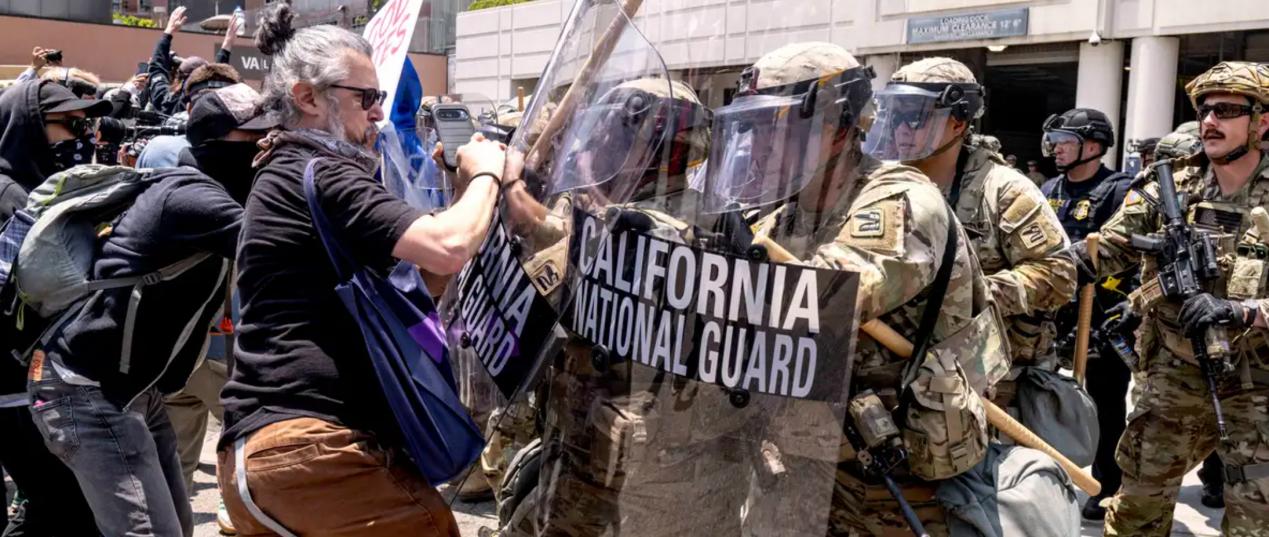
In June 2025, intense conflicts broke out on the streets of Los Angeles, California, USA: federal law enforcement agencies conducted surprise raids to capture illegal immigrants, the National Guard confronted protesters, and Governor Newsom openly challenged the Trump administration. Behind this conflict lies a power struggle between the Trump administration and California that has lasted for several years. At its core, it represents a triple rift within the framework of the American federal system: between the central and local governments, between the Republican and Democratic parties, and between globalization and localism. This game is not only about policy differences but also reflects the deep crisis in the American political system.
I. Tariff War: A Direct Clash of Economic Lifelines
As the largest state in the US in terms of economy, California's GDP accounts for nearly 15% of the national total, with an export volume exceeding 520 billion US dollars. Its agriculture, manufacturing, and high-tech industries are highly dependent on the global supply chain. The tariff policies implemented by the Trump administration, especially those against China and Mexico, have directly impacted California's core interests. The tariff policies have led to the loss of over 100,000 jobs in California and a rise in the unemployment rate.
The Newsom administration sued the Trump administration on the grounds that the tariff policies had directly damaged the state's economy, demanding that the federal government assume liability. This move was not only a defense of economic interests but also a political declaration of war by the Democratic "deep blue state" against the Republican trade protectionism. California has attempted to build a "de-globalized" supply chain system by setting up a tariff buffer fund and signing regional tax-free agreements with Canada and Mexico, further intensifying its opposition to the federal government.
II. Immigration War: A Struggle of Values and Electoral Interests
The immigration issue is another core battlefield in the conflict between Trump and California. As a gathering place for illegal immigrants, California has long adhered to the "sanctuary state" policy, prohibiting local law enforcement agencies from cooperating with federal immigration enforcement. The Trump administration sent the National Guard to raid Los Angeles on the grounds that "illegal immigrants threaten the jobs of the middle and lower-income groups in the US," triggering large-scale protests. This action was regarded by the Democratic Party as a "trampling on state rights," while the Republican Party accused California of "tolerating illegal immigrants."
The deeper logic lies in electoral interests. California has 55 electoral votes and is a crucial stronghold for the Democratic Party. By attacking California's immigration policies, Trump aims to undermine the Democratic Party's support base in a key state while catering to his "redneck" voters' hostility towards illegal immigrants. This politicization of the immigration issue further exacerbates ethnic divisions in American society.
III. The Crisis of Federalism: Blurring and Reconstruction of Power Boundaries
The conflict between Trump and California is essentially the blurring of power boundaries within the framework of the American federal system. The federal government defends against California's lawsuit on the grounds of "sovereign immunity," while California exploits the procedural loophole in Section 301 of the 1930 Tariff Act to attempt to break through the judicial review boundaries of federal trade policies. This legal confrontation exposes the institutional flaws of federalism in responding to the challenges of globalization.
What is even more alarming is that Trump's direct dispatch of the National Guard to California without the consent of the state governor is seen as a serious erosion of the principle of state autonomy. Historical experience shows that conflicts between the federal and state governments often end in "judicial compromise + political deals," but the intensity of this conflict far exceeds previous ones. The California legislature has set aside 25 million US dollars to counter Trump's policies, while Trump threatens to cut education and infrastructure funding to California. Both sides have fallen into a vicious cycle of "tit for tat."
In this power struggle, there are no true winners. The original intention of federalism was to balance the power between the central and local governments, but when political polarization tears apart social consensus, any policy can become a tool for partisan struggles. Perhaps, as California Governor Newsom said, "In the wave of anti-globalization, no one can remain unscathed." What the United States needs may be a systemic reflection that transcends partisan interests.

On January 4th local time, Trump warned India that if it does not limit its purchase of Russian oil, the United States will continue to raise tariffs on Indian products. Trump's latest warning sent shockwaves through the Indian financial market in just one day.
On January 4th local time, Trump warned India that if it do…
In October 2025, the US trade deficit narrowed unexpectedly…
According to the British media CoinJournal, recently, due t…
In January 2026, US President Trump once again set his sigh…
Europe is facing a crucial strategic choice: In the face of…
On New Year's Day 2026, BMW China announced a "systematic v…